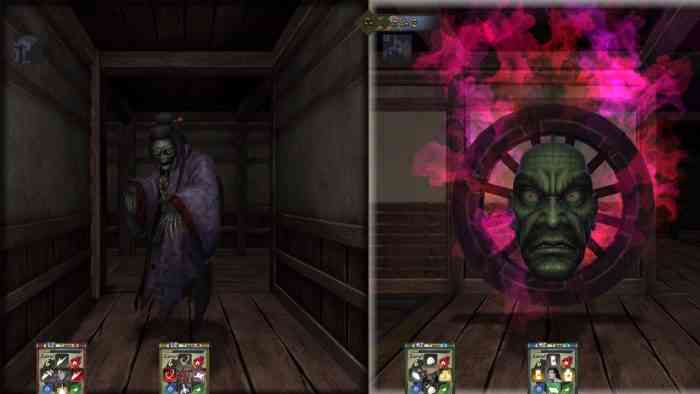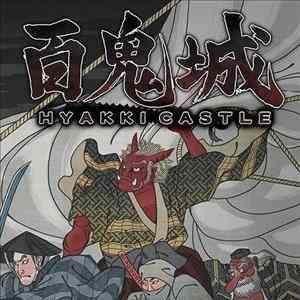Hyakki Castle Review
With 2017 feeling like the year of the first person shooter, it’s been difficult to remember the last time we had a new 3D dungeon crawler on the scene. For some, they haven’t quite felt what it means to be trapped in a confined dungeon with only your wits about you, but this might just be one to grab your attention. Developed by Asakusa Studios, Hyakki Castle is a first-person dungeon crawling RPG set in the 18th century of Japan. Rich with the lore and mythology of Japanese culture, Hyakki Castle is the story of a powerful sorcerer who tried to overthrow the shogun and was banished to Hyakki Island, a prison island. Through the forces of magic, the guards and prisoners switched places, and a mighty castle appeared on the island. The shogun, fearing that the sorcerer must be behind this, sends his powerful team of four warriors to investigate and stop any uprising on Hyakki Island.
While I can’t say I am well versed in Japanese myth and legend, Hyakki Castle does an honest job of introducing the characters, creatures, and elements of their rich history in a way I can understand. Traditional Japanese names for races, items, and attacks are all present but with a helpful explanation to better understand it. I have played foreign themed games in the past such as the Warriors series or Romance of the Three Kingdoms, but they all felt like I needed to already possess previous knowledge of the culture to appreciate it. Hyakki Castle, on the other hand, is a great introduction to the culture.
The game is played as a classic 3D dungeon crawler, in that your characters portraits rest at the bottom of the screen as you move tile by tile through a labyrinth dungeon to solve puzzles, fight enemies, discover loot, and so on. These games were much more prominent in the 90s (the Might and Magic series being a particular favorite of mine) and had developed with a bit greater range of movement over time. Reverting to the “one step at a time” formula and turning being restricted to 90 degrees, it felt like a true homage to the classic style of the game with one notable addition: the ability to split your party. The party can be separated into two teams (either 2 and 2 or 1 and 3) and the screen swaps to a split mode. This is useful for solving puzzles and, if you can keep up with the controls, flanking enemies. While it is a neat feature that is used right from the beginning of the game, I still preferred to stay working as a single unit in combat.
_______________________
“once you unlock a few attacks for each character it’s a matter of being quick at clicking to win.”
Hyakki Castle, unfortunately, does nothing to offer a tutorial. If you want to learn what buttons to hit you’ll need to get acquainted with the menu. The game does support controllers if keyboards aren’t your thing, as well as button mapping to get the game just how you like it. In the early goings of the game I was set up for all of my dungeon crawling with both hands on the keyboard, however, selecting attacks requires a mouse. Wanting to be quicker, I remapped the buttons so it was accessible with one hand, however, I found myself getting in bad situations simply because the movement, camera control, and party controls were all done with one hand. My previous experience with dungeon crawlers like this would let you auto-attack with a single button stroke, however, this simply isn’t an option here.

As the game begins, players are able to customize their four party members, selecting their race, class, voice, and name. It’s good to have a mixed party because each of them will bring something unique to combat: the Shinkan uses ranged magic and can heal the party; the Sohei uses his fists but can also instill buffs on the party. Leveling up will give you points to unlocking new attacks but you won’t be prompted to do it. I had to discover this on my own after reaching level 10, thinking my open attack slots would be filled by weapons, not abilities. That being said, once you unlock a few attacks for each character it’s a matter of being quick at clicking to win the battle. My team was able to unleash a devastating flurry of attacks while being buffed and healed and it quickly became very satisfying to see the screen light up with attack after attack. I did have some issues with my keyboard feeling less than responsive but I would like to chock that up to my well-used keyboard over any actual issue with the game.
_______________________
“the game falters for its repetitive scenery and total lack of tutorial or even on screen button cues.”
Hyakki Castle also features save points as opposed to saving on the go. While I can appreciate how it adds a layer of difficulty and desperation as you need to survive from point to point, it seems like a questionable idea to include considering many gamers just don’t have the time to rely on save points anymore. Graphically, the game again feels like an homage to the 90s, but I don’t think that’s such a good thing. Textures are repetitive and a little flat, and with such close quarter rooms and the quick, choppy camera turns, it can be easy to get a bit disoriented when every wall panel is nearly identical. It’s the lore that drives this game home, along with some solid yet simple puzzle solving that encourages exploration. Had it not done such a great job introducing me as a newcomer to Japanese mythology, it would probably feel fairly stale.
Hyakki Castle is an homage to the classic 3D dungeon crawler genre that has felt ignored the last few years. With a rich lore and simple yet interesting story, the game falters for its repetitive scenery and total lack of tutorial or even on-screen button cues. Combat is fun and tactical, and the ability to separate a party into two is a unique addition but isn’t quite enough to help drive the interest in the game. Had Hyakki Castle not taken the extra length to teach me about Japan’s mythology, the game would have fallen flat for simply being too basic and repetitive.
**PC code provided by the publisher**
The Good
- Introduction to Japanese Lore
- Puzzle Solving
- Variety of Attacks
The Bad
- Repetitive Design
- Lack of Tutorial/Instruction
- Odd Controls

